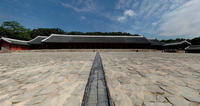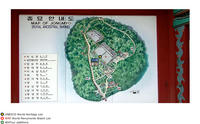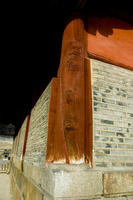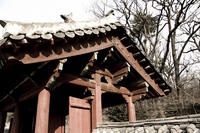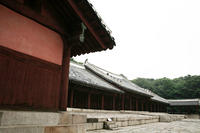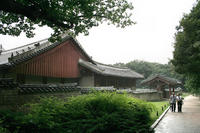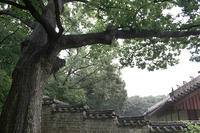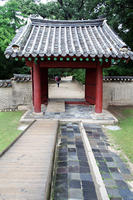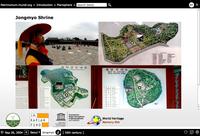You are in: Asia -> Korea, Republic of -> Jongmyo Shrine, and traditional search or Image Gallery will yield results of this site only
Jongmyo Shrine
| Site number: | 738 |
|
| Type of site: | Cultural | |
| Date: | 16th century | |
| Date of Inscription: | 1995 | |
| Location: | Asia, Republic of Korea, Seoul | |
Up to 75 images are shown here. Click on each for more details or on Image Gallery for more images.
| Description: | Of the Confucian royal shrines to have been preserved, Jongmyo is the oldest and most authentic. Devoted to the Choson dynasty’s forefathers (1392–1910), the shrine has embraced its present appearance ever since the 16th century and accommodates tablets wearing the teachings of former royal family members. Still taking place there are ritual ceremonies, which perpetuate a tradition that dates back to the 14th century, they beautifully link music, song and dance. --WHMNet paraphrase from the description at WHC Site, where additional information is available. For 360 degree imaging of this site, click here. | |
| Jongmyo is a Confucian shrine dedicated to the memorial services for the deceased kings and queens of the Korean Joseon Dynasty. According to UNESCO, the shrine is the oldest royal Confucian shrine preserved and the ritual ceremonies continue a tradition established since the 14th century. Such shrines existed during the Three Kingdoms of Korea period but only the shrines for the rulers of Joseon remain. The Jongmyo Shrine was added to the UNESCO World Heritage list in 1995. When it was built in 1394 by order of King Taejo, it was thought to be one of the longest buildings in Asia, if not the longest. The main hall, known as Jeongjeon, had seven rooms. Each room was reserved for a king and his queen. The complex was expanded by King Sejong who ordered the construction of Yeongnyeongjeon (Hall of Eternal Comfort). This practice of expansion continued, with the growth of the complex moving from west to east, because of the need to house more memorial tablets during the reigns of later kings until there were a total of nineteen rooms. However, during the Seven-Year War, Japanese invaders burned down the original shrine and a new complex was constructed in 1601 CE which has survived to this day. --Wikipedia. Text is available under the Creative Commons Attribution-ShareAlike License. For 360 degree imaging of this site, click here. | ||
| Source: | http://whc.unesco.org/en/list/738 | |
| Reference: | 1. UNESCO World Heritage Center, Site Page. | |







